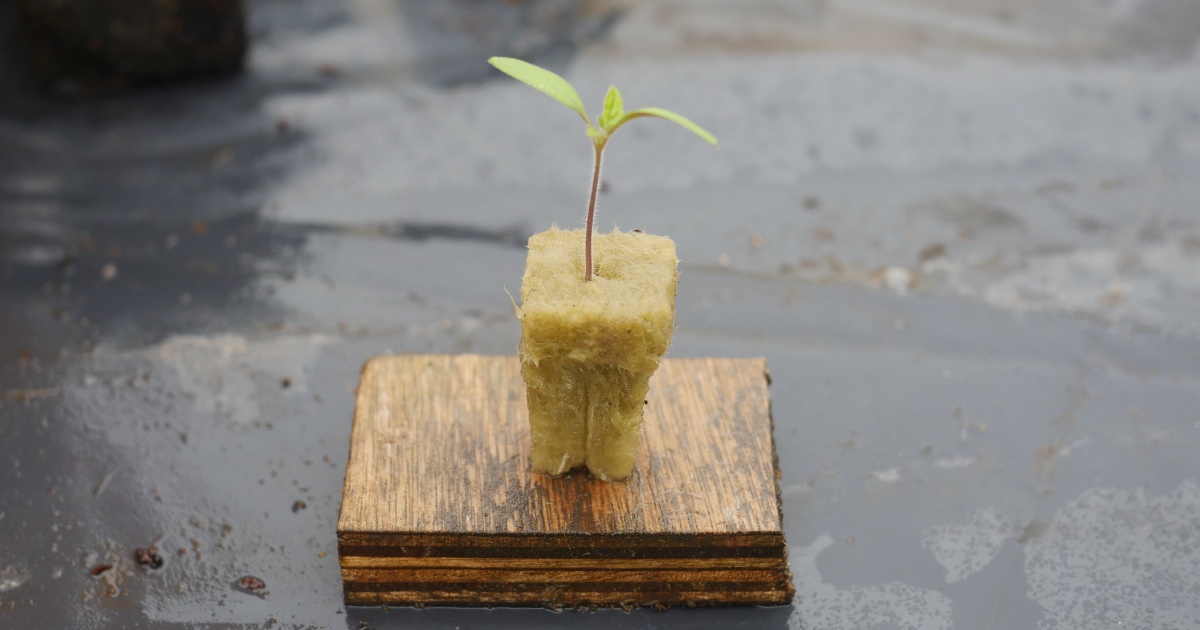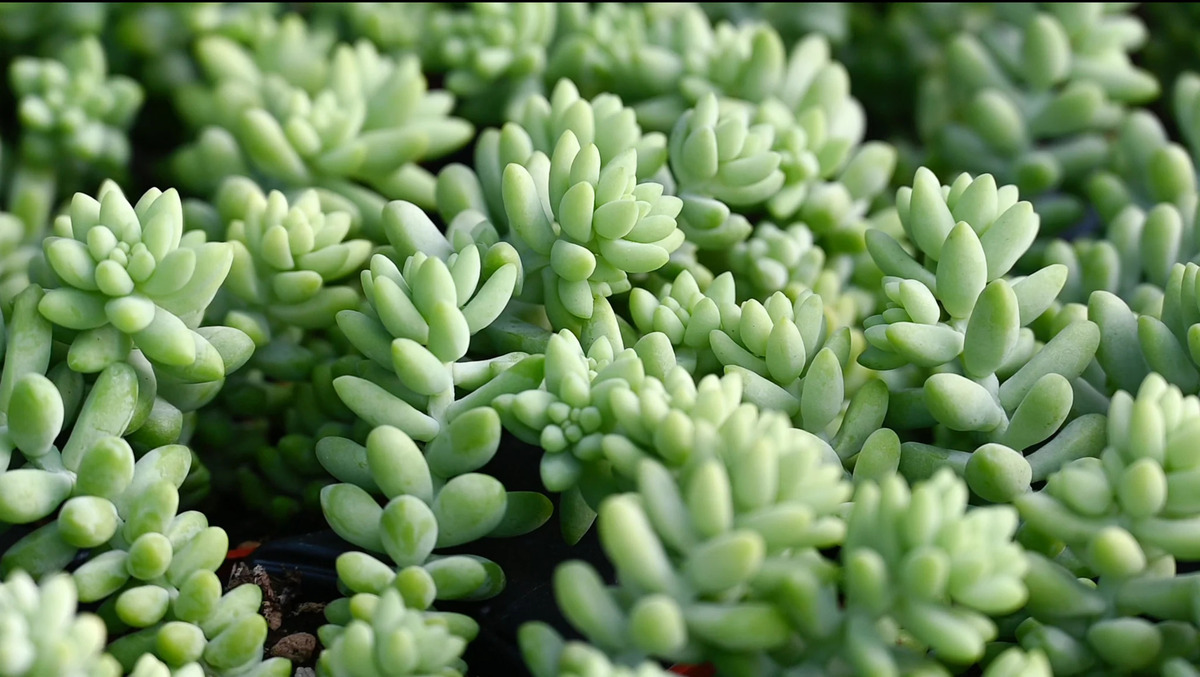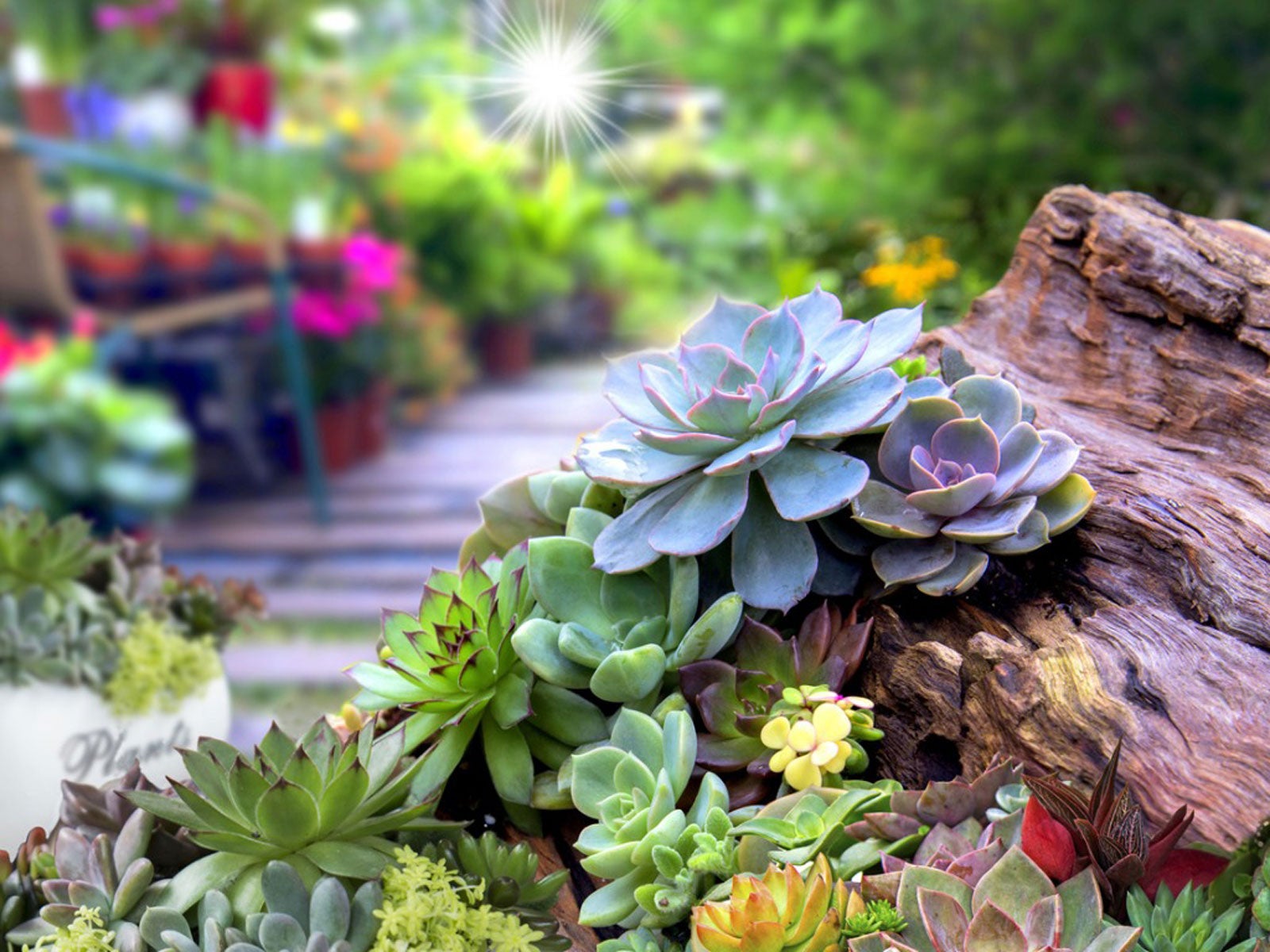Home>Gardening Techniques>Plant Care>How To Care For A Fukien Tea Bonsai


Plant Care
How To Care For A Fukien Tea Bonsai
Modified: February 9, 2024
Learn the essential steps in plant care for a Fukien Tea Bonsai. Discover the best techniques to ensure your bonsai thrives and stays healthy, from watering to pruning.
(Many of the links in this article redirect to a specific reviewed product. Your purchase of these products through affiliate links helps to generate commission for Chicagolandgardening.com, at no extra cost. Learn more)
Table of Contents
Introduction
Welcome to the world of bonsai! Bonsai is the art of growing miniature trees in containers, creating stunning and captivating representations of nature. One popular bonsai tree variety is the Fukien Tea Bonsai. Known for its beautiful white flowers and small dark green leaves, the Fukien Tea Bonsai is a favorite among bonsai enthusiasts.
Caring for a Fukien Tea Bonsai requires attention to detail and a deep understanding of its specific needs. With proper care, this bonsai tree can thrive and bring beauty to any space. In this article, we will guide you through the essential steps to keep your Fukien Tea Bonsai healthy and vibrant.
Whether you are a beginner or an experienced bonsai enthusiast, learning how to care for a Fukien Tea Bonsai is a rewarding experience. This unique tree has a rich history and is known for its resilience and adaptability. With proper care, your bonsai can live for decades, growing and evolving alongside you.
In the following sections, we will explore the key aspects of caring for a Fukien Tea Bonsai, including choosing the right location, watering and humidity, fertilization, pruning and shaping, dealing with pests and diseases, and the art of repotting. Each aspect is crucial to maintaining the health and beauty of your bonsai tree.
So, let’s dive in and discover the secrets behind successful Fukien Tea Bonsai care, and embark on a journey of nurturing and cultivating one of nature’s most enchanting creations.
Choosing the Right Location
When it comes to caring for your Fukien Tea Bonsai, choosing the right location is paramount. This tree thrives in bright, indirect light, so it is essential to find a spot in your home or garden that provides the perfect balance of sunlight and shade.
If you intend to keep your bonsai indoors, place it near a window that receives bright, indirect sunlight for at least six hours a day. Avoid placing it directly in the path of harsh, direct sunlight, as this can scorch the delicate leaves of the Fukien Tea Bonsai.
In warmer climates, you have the option to keep your bonsai outdoors. However, be mindful of extreme temperatures and protect your tree from intense afternoon sun or harsh winds. Placing the bonsai in a partially shaded area, such as under a tree or on a covered porch, can shield it from excessive heat while still allowing it to enjoy some natural light.
It is important to note that Fukien Tea Bonsai trees prefer moderate humidity levels. To achieve this, you can place a humidity tray filled with water and pebbles beneath the bonsai. As the water evaporates, it will create a humid microclimate around the tree, mimicking its natural habitat and promoting healthy growth.
Remember to regularly rotate your bonsai to ensure even exposure to light. This will help prevent any uneven growth or leaning towards one side. Additionally, keep an eye out for drafts or sudden temperature changes near windows or doors, as these can shock and damage the delicate foliage of your Fukien Tea Bonsai.
By finding the perfect location for your Fukien Tea Bonsai, you are setting the foundation for its overall health and vitality. So take the time to observe and understand the lighting and environmental conditions in your chosen spot, and create an ideal space for your bonsai to thrive.
Watering and Humidity
Proper watering is essential for the health and well-being of your Fukien Tea Bonsai. This tree prefers a moist environment, but it is crucial to strike the right balance to avoid overwatering or underwatering.
First and foremost, it is crucial to water your Fukien Tea Bonsai regularly. Check the moisture level of the soil by inserting your finger about an inch deep. If the soil feels dry, it’s time to water your bonsai. When watering, make sure to thoroughly soak the soil until water drains out from the bottom of the pot. This ensures that the entire root system is adequately hydrated.
However, it is equally important to prevent waterlogging. Stagnant water can cause root rot and other fungal diseases. Therefore, make sure to remove any excess water from the drainage tray or saucer after watering. This will prevent the roots from sitting in water for too long.
In addition to regular watering, maintaining proper humidity levels is crucial for the Fukien Tea Bonsai’s health. This tree prefers moderately high humidity, which can be a challenge in dry or arid climates.
You can increase humidity levels around your bonsai by misting the leaves with water using a spray bottle. This can be done once or twice a day, especially during dry seasons or when the heating or cooling system is in use.
Another effective way to provide humidity is by using a humidity tray. Place a layer of small pebbles or stones in a shallow tray and fill it with water. Set the bonsai on top of the pebbles, ensuring that the water level is below the base of the pot. As the water evaporates, it increases the humidity around the tree.
Furthermore, avoid placing your Fukien Tea Bonsai near sources of dry air, such as heating vents or air conditioning units. These can quickly dehydrate your tree and lead to stress or leaf drop. Maintaining a humid environment is vital for the overall health and vitality of your bonsai.
Remember to regularly monitor the moisture levels of the soil and adjust your watering schedule accordingly. By providing adequate hydration and humidity, you will ensure the longevity and beauty of your Fukien Tea Bonsai.
Fertilization
Fertilization is an essential aspect of caring for your Fukien Tea Bonsai. It provides the necessary nutrients for healthy growth, vibrant foliage, and robust root development. Regular fertilization will help your bonsai thrive and reach its full potential.
The best time to start fertilizing your Fukien Tea Bonsai is during the growing season, which typically spans from spring to fall. During this period, the tree is actively producing new leaves and branches and has an increased demand for nutrients.
Choose a balanced, water-soluble fertilizer specifically formulated for bonsai trees. Follow the instructions on the packaging to determine the proper dosage and frequency of application. In general, diluted fertilizer should be applied every two to three weeks during the growing season.
When fertilizing your bonsai, water it thoroughly first. This ensures that the soil is evenly moist and prevents fertilizer burn. Once the soil is moist, apply the diluted fertilizer carefully, making sure to cover the entire root area. Avoid getting fertilizer on the leaves, as it may cause burns or damage the delicate foliage.
It is important to note that Fukien Tea Bonsai trees are sensitive to fertilizer concentration. Using a weaker solution is preferable to prevent the risk of overfertilization. Remember, it is always easier to provide additional nutrients if needed than to correct the damage caused by excessive fertilizer.
During the dormant period, typically in winter, reduce or completely stop fertilization. The tree is in a resting phase during this time, and excessive fertilization can disrupt its natural cycle and cause harm.
Regularly inspect your bonsai for any signs of nutrient deficiencies or excesses. Yellowing or discolored leaves may indicate a lack of certain nutrients, while stunted growth or burnt leaf tips could be a sign of overfertilization. Adjust the fertilization schedule or the concentration accordingly to maintain a balanced nutrient supply.
Overall, providing the right amount of fertilizer at the right time is crucial for the healthy growth and development of your Fukien Tea Bonsai. With proper fertilization, your bonsai will flourish and showcase its beauty for years to come.
Pruning and Shaping
Pruning and shaping are essential techniques for maintaining the aesthetic appeal and overall health of your Fukien Tea Bonsai. Regular pruning helps control the size, shape, and branching structure of the tree, while promoting new growth and maintaining its desired form.
One key aspect of pruning is removing dead, diseased, or damaged branches. This not only improves the overall appearance of the bonsai but also prevents the spread of diseases or pests. Use clean and sharp pruning shears to make clean cuts, ensuring minimal damage to the surrounding tissue.
Additionally, selective pruning is necessary to encourage branching and create a more compact and refined silhouette. Identify long or leggy branches and prune them back to promote backbudding – the growth of new branches from dormant buds along the trimmed branches.
To shape your Fukien Tea Bonsai, consider the desired style or form you want to achieve. Popular bonsai styles include formal upright, informal upright, slanting, cascade, and windswept. Research and study the specific characteristics of each style, and then carefully prune and shape the tree accordingly.
While pruning, step back and observe the tree from different angles to ensure you are maintaining a harmonious balance between the branches, proportion, and overall design. Remember that bonsai is an art form and allows for personal creativity and interpretation.
During the growing season, frequent pinching or pruning of new shoots can help refine and shape the branches. Pinching involves carefully removing the soft tips of new growth between your fingers or with bonsai scissors. This encourages branching and helps create a more compact and dense foliage pad.
It is important to maintain a balance between pruning and the overall health of your Fukien Tea Bonsai. Avoid excessive pruning or heavy defoliation, as this can weaken the tree and hinder its ability to replenish energy through photosynthesis.
Regularly inspect your bonsai for any signs of pests, diseases, or overcrowding. Remove any unwanted growth, such as suckers or shoots coming from the base of the tree, to maintain a clean and refined appearance.
Pruning and shaping your Fukien Tea Bonsai requires patience and skill. Take your time, have a vision for how you want your bonsai to look, and enjoy the artistic process of refining and shaping your miniature masterpiece.
Pests and Diseases
Just like any other plant, Fukien Tea Bonsai trees are susceptible to pests and diseases. It is important to be vigilant and take proactive measures to keep your bonsai healthy and free from infestations.
One common pest that can affect Fukien Tea Bonsai is the aphid. These small insects feed on the sap of the leaves and can cause damage if left untreated. To control aphids, you can gently spray the affected leaves with a mixture of water and mild dish soap. Alternatively, you can introduce natural predators like ladybugs, which feed on aphids.
Another common pest is the spider mite. These tiny creatures are known for spinning fine webs on the leaves and sucking the sap, leading to yellowing and stunted growth. Regularly inspect the undersides of the leaves to detect spider mite infestations early. You can control spider mites by periodically hosing down the leaves, ensuring to target both the upper and lower surfaces.
Scale insects are another potential pest that can attack your Fukien Tea Bonsai. These small, oval-shaped insects attach themselves to the branches and suck the sap, causing leaf yellowing and a sticky residue on the leaves. To remove scale insects, you can use a cotton swab soaked in rubbing alcohol to gently wipe them off the branches
Fungal diseases can also affect your bonsai, especially if the tree is kept in humid conditions or overwatered. One common fungal disease is root rot, which occurs when the roots are constantly submerged in water. To prevent root rot, make sure to water your bonsai properly and ensure good drainage in the pot. If you suspect root rot, remove the affected roots, repot the tree in fresh soil, and adjust your watering practices to prevent future occurrences.
Another fungal disease to watch out for is powdery mildew. This appears as a white, powdery substance on the leaves, causing them to curl and become distorted. To treat powdery mildew, remove the affected leaves and apply a fungicidal spray specifically formulated for powdery mildew control.
Regularly inspecting your Fukien Tea Bonsai for signs of pests and diseases is crucial. Early detection and prevention are key to keeping your bonsai healthy. Maintaining proper watering practices, ensuring good air circulation, and providing adequate lighting will help keep your bonsai’s immune system strong and less susceptible to pest infestations and diseases.
Remember, prevention is always better than cure when it comes to pests and diseases. Regularly monitor your bonsai, practice good hygiene, and address any issues promptly to ensure the long-term health and vitality of your beautiful Fukien Tea Bonsai.
Repotting
Repotting is an important aspect of caring for your Fukien Tea Bonsai. It allows for the renewal of the soil, promotes healthy root growth, and ensures the long-term health of your bonsai tree.
The frequency of repotting depends on the age and growth rate of your Fukien Tea Bonsai. Younger trees may require repotting every one to two years, while older, more established trees may only need to be repotted every three to four years.
The optimal time to repot your bonsai is during the early spring, just before the tree enters its active growth phase. This allows the roots to recover and grow into the new soil before the demanding growth period begins.
Prior to repotting, gently remove the bonsai tree from its pot. Carefully examine the root system and trim any damaged or tangled roots using sharp bonsai shears. This helps stimulate new root growth and encourages a compact and healthy root system.
When choosing a new pot, select one that is slightly larger than the old pot. It should provide enough space for the roots to grow and allow for future development. Make sure the pot has proper drainage holes to prevent waterlogging.
Prepare the new pot by placing a layer of bonsai soil at the bottom. This helps provide drainage and ensures proper aeration for the roots. Position the bonsai in the pot, making sure it is centered and at the desired angle. Fill the remaining space with fresh bonsai soil, gently firming it around the roots.
After repotting, thoroughly water the bonsai to settle the soil and eliminate any air pockets. Place the tree in a shaded location for a few weeks to allow the roots to recover and adjust to the new pot.
During the recovery period, be mindful of watering and humidity levels. Water the Fukien Tea Bonsai carefully, making sure not to overwater or underwater. Monitor the soil moisture and adjust your watering schedule accordingly.
It is important to note that repotting can be stressful for the tree, so avoid any extensive pruning or shaping immediately after repotting. Allow the tree to recover and regain its strength before performing any major aesthetic changes.
By repotting your Fukien Tea Bonsai regularly, you provide it with fresh soil, ample space for root growth, and an opportunity for rejuvenation. This essential practice ensures the long-term health and vitality of your bonsai tree.
Conclusion
Caring for a Fukien Tea Bonsai is a rewarding and fulfilling experience. By following the essential guidelines mentioned in this article, you can ensure the health, beauty, and longevity of your bonsai tree.
Choosing the right location is crucial, providing your bonsai with the ideal balance of sunlight and shade. Proper watering and maintaining humidity levels are key to keeping the Fukien Tea Bonsai hydrated and thriving. Fertilization provides the necessary nutrients for healthy growth and vitality.
Pruning and shaping allow you to create a stunning and visually appealing bonsai tree. Regular inspections and preventive measures help keep pests and diseases at bay. Lastly, repotting your bonsai ensures proper root development and rejuvenation.
As you embark on your bonsai journey, remember that each tree is unique and requires a personal touch. Study your Fukien Tea Bonsai, learn its specific needs, and adapt your care routine accordingly. Regular observation and attention to detail will help you understand how your bonsai responds to different conditions, ensuring a strong and healthy tree.
Patience is key when caring for a bonsai. It is a long-term commitment that rewards you with a living work of art. Enjoy the process, learn from your mistakes, and embrace the calming and therapeutic effects of tending to your miniature masterpiece.
With dedication and proper care, your Fukien Tea Bonsai will not only bring beauty and serenity to your surroundings but also serve as a reminder of the resilience and beauty of nature’s creations.








